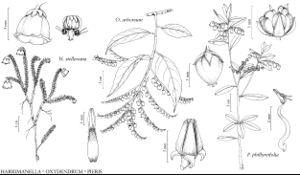Difference between revisions of "Oxydendrum arboreum"
in A. P. de Candolle and A. L. P. P. de Candolle, Prodr. 7: 601. 1839,.
FNA>Volume Importer |
FNA>Volume Importer |
||
| Line 6: | Line 6: | ||
|place=7: 601. 1839, | |place=7: 601. 1839, | ||
}} | }} | ||
| − | |basionyms={{Treatment/ID/ | + | |basionyms={{Treatment/ID/Basionym |
|name=Andromeda arborea | |name=Andromeda arborea | ||
|authority=Linnaeus | |authority=Linnaeus | ||
| + | |publication_title=Sp. Pl. | ||
| + | |publication_place=1: 394. 1753 | ||
}} | }} | ||
|synonyms= | |synonyms= | ||
| Line 49: | Line 51: | ||
|publication year= | |publication year= | ||
|special status= | |special status= | ||
| − | |source xml=https://jpend@bitbucket.org/aafc-mbb/fna-data-curation.git/src/ | + | |source xml=https://jpend@bitbucket.org/aafc-mbb/fna-data-curation.git/src/f6b125a955440c0872999024f038d74684f65921/coarse_grained_fna_xml/V8/V8_970.xml |
|subfamily=Ericaceae subfam. Vaccinioideae | |subfamily=Ericaceae subfam. Vaccinioideae | ||
|genus=Oxydendrum | |genus=Oxydendrum | ||
Revision as of 20:31, 24 September 2019
Plants to ca. 25(–35) m, with sour-tasting sap. Stems terete. Leaf blades turning red in autumn, 5.5–23.5 × 2–8 cm, base cuneate to rounded, apex acute to acuminate. Flowers: calyx lobes 1–2 × 0.7–1.4 mm; corolla 4–7 × 2.5–5.5 mm; filaments 2–3.5 mm; anthers with locules narrowed distally, tubulelike; style strongly impressed into apex of ovary. Capsules 3.5–8.5 × 2–4 mm, unicellular-hairy; placentae basal. 2n = 24.
Phenology: Flowering late spring–summer.
Habitat: Usually well-drained, acid, broadleaved forests on slopes, bluffs, in ravines, or along streams, ecotone areas in pinelands, swamp margins
Elevation: 0-1700 m
Distribution

Ala., Fla., Ga., Ind., Ky., La., Md., Miss., N.J., N.Y., N.C., Ohio, Pa., S.C., Tenn., Va., W.Va.
Discussion
Oxydendrum arboreum is often used as an ornamental; it sometimes persists after cultivation (or rarely escapes from cultivation) in regions north of its native range; specimen-based records from New Jersey and southern New York appear to represent such escapes from cultivation.
Selected References
None.
